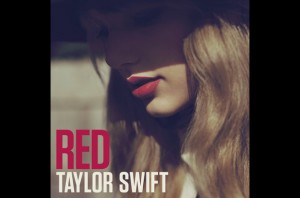 On my way to work the other day, I was flipping through radio stations and I heard some Taylor Swift. As expected, I was about to switch stations. Then I heard it: dubstep.
On my way to work the other day, I was flipping through radio stations and I heard some Taylor Swift. As expected, I was about to switch stations. Then I heard it: dubstep.
You heard me right — Taylor Swift’s newest single “I Knew You Were Trouble” features a nice dubstep interlude.
At first, I had the same reaction as you probably would: “You’ve got to be kidding me.” But then I started to think about it more. And more. And (let’s be honest), I didn’t end up changing the station.
That’s how you catch someone’s attention. There’s a reason Swift’s newest album Red became the fastest-selling album in over a decade — it’s fun, it’s risky, and it’s unique.
Over the past ten years, I’ve sat in rooms from San Francisco to Cairo listening to entrepreneurs of all kinds pitch me their businesses. Some pitches you get immediately- you see an opportunity and all you want to do is roll up your sleeves and do whatever you need to help the business grow faster.
Most times, however, the pitches are so bad your mind starts wandering, and you begin thinking about what you’ll be having for lunch (beef ribblets…mmm).
Bad pitches can most simply be broken down to two types. A) Bad pitches of bad businesses, and B) Bad pitches of good (or great) businesses. There is no worse tragedy than a really great business that goes down the tubes because it failed to build momentum.
Listen, we entrepreneurs only get one chance to make an impression, so when you have it, you need to bring the pain.
Here are some things to know about pitching an idea — and how to make it count.
How to Do It
It doesn’t necessarily take dubstep to get someone’s attention (did you see Microsoft’s ad for Internet Explorer 9). What it takes is enthusiasm — let’s call it the energy of a dubstep.
You need to captivate your audience from the very beginning. There are a few ways you could go about doing this:
- Stories are best, (or at least I think so). When a story is easily told and relatable, you’ve almost instantly caught your audience’s attention. This creates connection on an emotional level.
- Stay simple: “The following ___ things will be covered in the next ___ minutes.” Keep it quick and to the point.
- Do something crazy. Taylor did it with dubstep, and I once saw a team sing its presentation. Find something that suits you, but isn’t too far out of your comfort zone. And, of course, there are limits — make your “crazy” applicable to the situation.
After your catchy opening, actively make yourself memorable:
- Be prepared. Know your material.
- Take people’s time seriously. Include only the most integral ideas.
- Use facts and statistics — people want evidence that your ideas work.
- Demonstrate that the business is going to grow and prosper whether the investor puts money in or not.
- Smile and have fun.
- Make it tangible: bring hands-on prototypes, or at least have great images.
End with the same strength (or greater than) what you started with. Remember:
- Reinforce key messages.
- Recap and summarize everything into one or two salient points.
- Be proactive: Ask for the next meeting.
How Not to Do It
Everyone has seen a painful pitch. Here are a few things not to do:
- Don’t make assumptions: People don’t care as much as you do about your product (yet). People may or may not know your market (so educate accordingly). Don’t assume the audience members have a long attention span. In short, assume nothing.
- Don’t ignore obvious risks and/or competition.
- Don’t make easy mistakes. If you act nervous and unprepared, people will notice.
- Don’t mismanage your slides: Don’t read from them, don’t let them get messy, and don’t allow too many in your presentation.
Most of these are obvious, yet they occur all too often anyway. You can be memorable in part simply by being better than all the rest.
Take a Lesson From Taylor Swift
I never thought I’d be saying this, but Taylor Swift did it perfectly. She caught America’s attention and they invested in her newest product.
Capture your audience from the second you open your mouth to the second you close it. Maybe it won’t make you the next country-star-turned-electronic artist, but it can help you get the next meeting.
Rahim Fazal is a software entrepreneur, startup adviser, and public speaker from San Francisco. By the age of 30, he has founded three companies, including leading social media platform Involver, which he sold to Oracle in July (and where he is now an executive). Rahim was honored at The White House with an Empact 100 Award by Startup America and The Kauffman Foundation. He has been named one of the Top 30 Entrepreneurs Under 30 in America by Inc Magazine, and one of the Top 25 Digital Thought-Leaders by iMedia. You can follow Rahim on Twitter @rahimthdream, and read more at http://www.rahimfazal.com.
Image Credit: billboard.com



